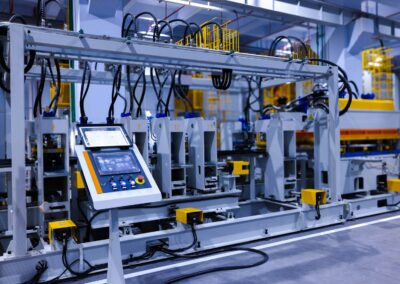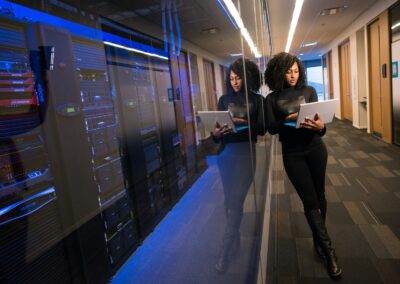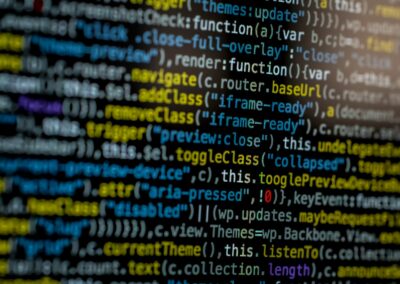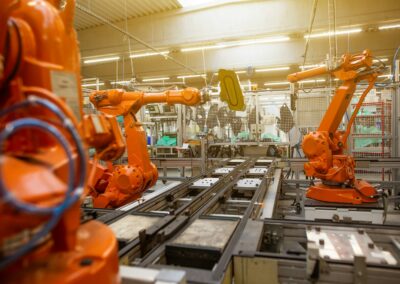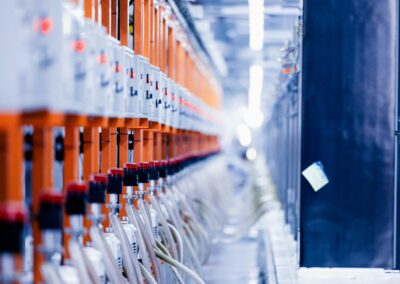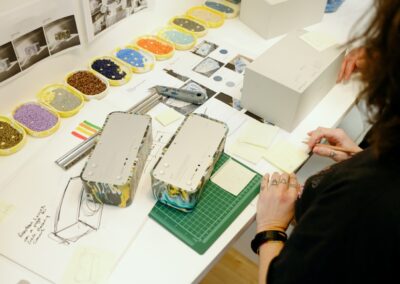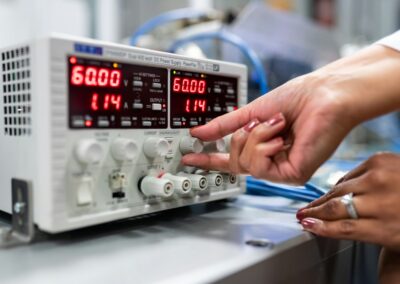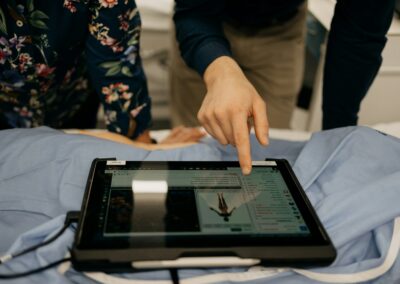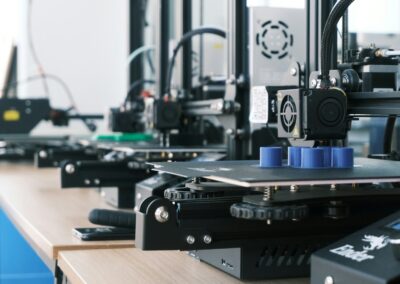Harnessing Digital Twins to Optimize Production and Overcome Challenges
Introduction to Digital Twins in Manufacturing
Digital twins in manufacturing simulation represent a significant advancement in how industries approach production and operational efficiency. This technology involves creating a virtual model of a physical production system, which allows manufacturers to simulate various scenarios, identify potential bottlenecks, and address inefficiencies before they manifest in the real world. The adoption of digital twins is gaining traction in regions like Saudi Arabia and the UAE, where rapid industrial growth demands innovative solutions to enhance productivity and competitiveness.
The concept of digital twins involves generating a precise digital replica of physical assets, processes, or systems. These virtual models are continuously updated with real-time data, providing a dynamic and accurate representation of the production environment. Manufacturers can use these models to conduct simulations, analyze performance, and make data-driven decisions that optimize their production processes. This proactive approach helps in foreseeing and mitigating issues, ensuring a smoother and more efficient manufacturing operation.
For businesses in fast-growing markets like Riyadh and Dubai, integrating digital twins into manufacturing operations can lead to substantial benefits. This technology enables a deeper understanding of production systems, allowing companies to streamline operations, reduce downtime, and enhance overall efficiency. By leveraging digital twins, manufacturers can stay ahead of the curve, ensuring that their operations are both resilient and adaptable to changing market demands.
Optimizing Production Scenarios with Digital Twins
One of the primary advantages of digital twins in manufacturing simulation is their ability to optimize production scenarios. By creating a virtual model of the production line, manufacturers can test various scenarios and identify potential bottlenecks before they impact actual production. This allows for adjustments and improvements to be made in the digital realm, minimizing disruptions and enhancing overall efficiency.
In Saudi Arabia and the UAE, where industrial sectors are expanding rapidly, digital twins provide a crucial tool for managing complex production environments. For instance, manufacturers can simulate different production schedules, equipment configurations, and supply chain variations to determine the most efficient setup. By analyzing these simulations, companies can pinpoint potential issues, such as equipment failures or supply shortages, and develop strategies to address them proactively.
Additionally, digital twins enable manufacturers to test the impact of new technologies and processes without interrupting ongoing operations. This approach allows companies to innovate and adapt to new trends, such as the integration of artificial intelligence or advanced robotics, without risking disruptions to their production lines. As a result, manufacturers can maintain high levels of productivity while staying at the forefront of technological advancements.
Identifying and Addressing Bottlenecks with Digital Twins
Identifying potential bottlenecks and inefficiencies is a critical aspect of improving manufacturing processes. Digital twins in manufacturing simulation offer a powerful solution for this challenge by providing a detailed and interactive view of production systems. Manufacturers can use digital twins to analyze workflows, assess performance metrics, and detect areas where bottlenecks may occur.
In the context of rapidly growing cities like Riyadh and Dubai, where industrial operations are scaling up, digital twins become essential for ensuring smooth and efficient production. By simulating various production scenarios, manufacturers can uncover hidden inefficiencies and make necessary adjustments to optimize their processes. For example, digital twins can help identify slowdowns in production lines, inefficiencies in material handling, or suboptimal equipment utilization, allowing companies to address these issues before they impact overall productivity.
Moreover, digital twins enable real-time monitoring and analysis of production systems, providing valuable insights into operational performance. This continuous feedback loop helps manufacturers make data-driven decisions, ensuring that their production processes are constantly optimized and aligned with their strategic goals. By leveraging digital twins to identify and address bottlenecks, companies can achieve significant improvements in efficiency, reduce costs, and enhance their competitive edge.
Case Studies: Successful Implementation of Digital Twins
Several manufacturers worldwide have successfully implemented digital twins to revolutionize their production processes. In the automotive industry, for example, companies like Ford and BMW have adopted digital twins to optimize their manufacturing operations. By creating virtual models of their production lines, these companies have been able to simulate different scenarios, identify potential bottlenecks, and make data-driven decisions that enhance efficiency and reduce downtime.
In the Middle East, companies in Dubai and Riyadh are also leveraging digital twins to drive innovation and improve their manufacturing processes. For instance, Dubai’s industrial sector has embraced digital twin technology to streamline production and enhance operational efficiency. By creating digital replicas of their production systems, manufacturers in Dubai can simulate various scenarios, optimize workflows, and address potential issues before they impact actual production.
In Riyadh, the use of digital twins is supporting the city’s Vision 2030 plan, which aims to diversify and modernize the economy. By integrating digital twins into their manufacturing operations, companies in Riyadh are able to enhance their production processes, improve resource utilization, and contribute to the overall goals of sustainable and efficient industrial development.
The Future of Digital Twins in Manufacturing
The future of digital twins in manufacturing simulation is promising, with advancements in technology expected to further enhance their capabilities. As artificial intelligence, machine learning, and IoT technologies continue to evolve, digital twins will become even more sophisticated and capable of providing deeper insights into production systems.
In the Middle East, the adoption of digital twins is likely to grow as industries seek innovative solutions to meet the demands of rapid development and modernization. The integration of AI and machine learning into digital twins will enable manufacturers to predict and prevent potential issues with greater accuracy, leading to even more efficient and resilient production processes. This will be particularly valuable in fast-paced markets like Saudi Arabia and the UAE, where staying ahead of technological trends is crucial for maintaining a competitive edge.
Furthermore, the use of blockchain technology can enhance the security and transparency of data used in digital twins. By providing a secure and immutable ledger for production data, blockchain can ensure the integrity of information and support more reliable decision-making. As digital twins continue to evolve, their integration with emerging technologies will drive significant advancements in manufacturing, leading to smarter, more efficient, and more resilient production systems.
Conclusion: Embracing Digital Twins for Enhanced Manufacturing Efficiency
Digital twins are revolutionizing manufacturing by providing powerful tools for simulating production scenarios, identifying bottlenecks, and addressing inefficiencies. By creating virtual replicas of production systems, manufacturers can optimize their processes, enhance efficiency, and stay ahead of technological advancements.
For businesses in Saudi Arabia, the UAE, Riyadh, and Dubai, adopting digital twins represents a significant opportunity to improve manufacturing operations and drive growth. The technology’s ability to simulate various scenarios, identify potential issues, and make data-driven decisions ensures that manufacturers can operate more efficiently and adapt to changing market conditions.
As digital twins continue to evolve, their integration with emerging technologies will further enhance their capabilities and impact. By embracing digital twins, manufacturers can achieve greater efficiency, reduce costs, and contribute to the overall success of their operations. The future of manufacturing is digital, and those who leverage this technology will be well-positioned to lead in a rapidly changing industrial landscape.
#DigitalTwins #ManufacturingSimulation #ProductionOptimization #Bottlenecks #Efficiency #SaudiArabia #UAE #Riyadh #Dubai #ArtificialIntelligence #Blockchain #Metaverse #ExecutiveCoaching #BusinessSuccess #Leadership #ProjectManagement



